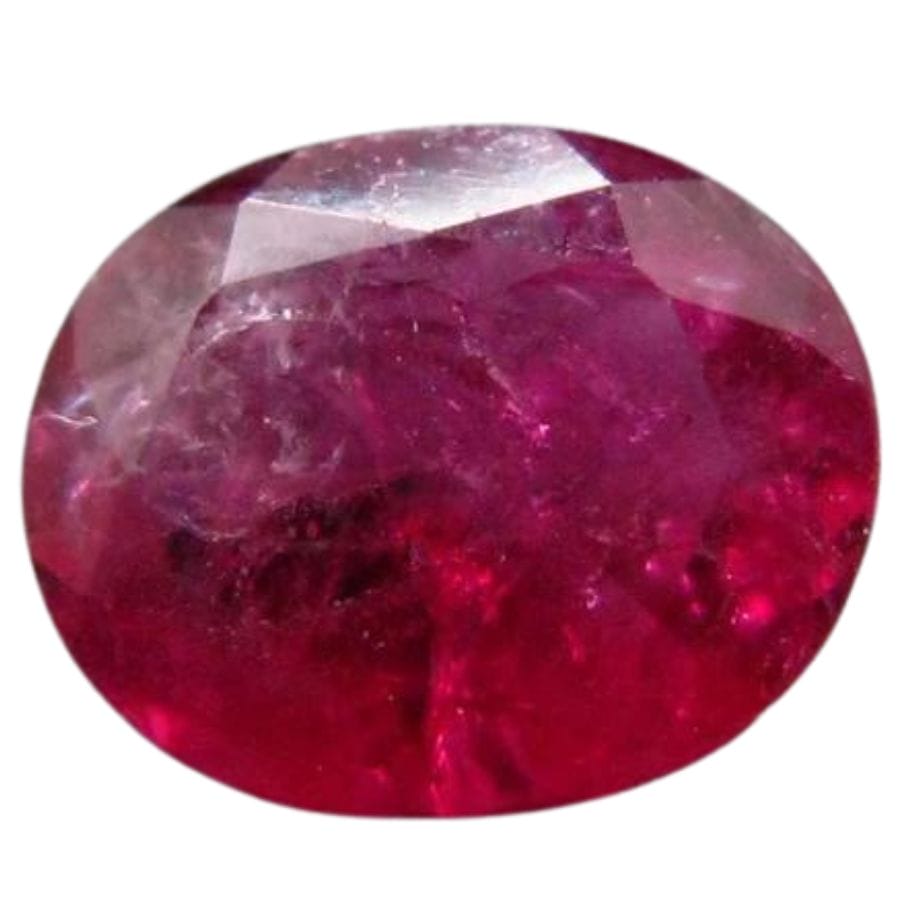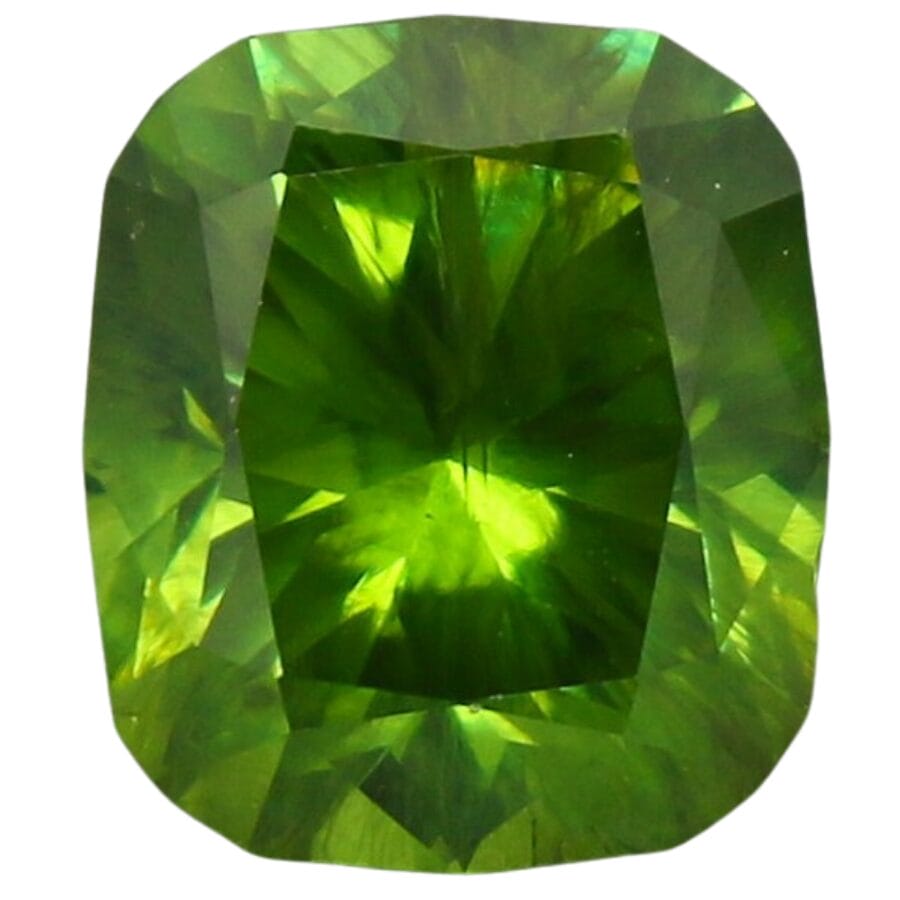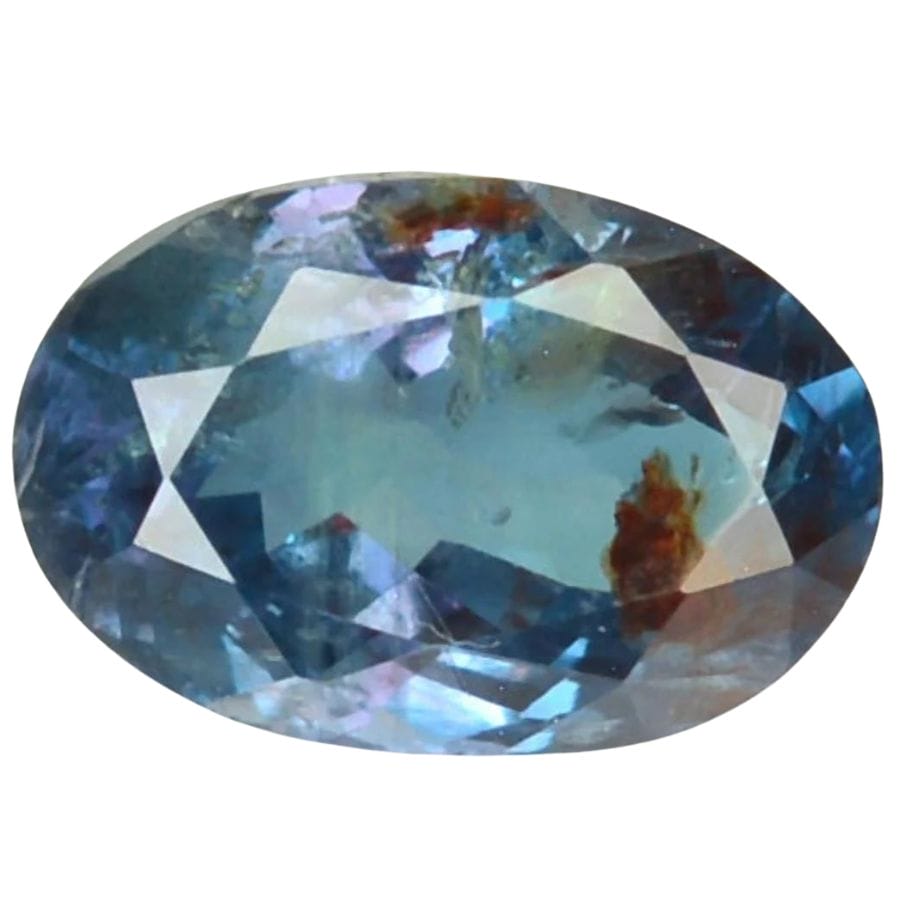Some of the rarest and most expensive gems in the world include jadeite, taaffeite, and red beryl. These stones are highly sought after and carry a big price tag.
People are often amazed by how much these gems can cost. The rarity and high cost make them very interesting to lots of folks.
Valuable Gems and What Makes Them So Rare
Some gems are so rare and can cost a fortune. They come from all over the world and can be really hard to find. We’re going to talk about what makes them so interesting and pricey.
Red Diamond

Red diamonds have different shades of red, from light pinkish to deep red. The best ones are really red, without looking brown or orange.
Red diamonds are super rare because their color comes from a deformation in their atomic structure instead of the presence of certain elements, like other colored gems..
Red diamonds are the rarest type of diamonds in the world. Finding one is like finding a treasure because there are so few of them, and they’re very difficult to find.
The Argyle mine in Australia used to find a few red diamonds, but it’s closed now. However, red diamonds have also been found in West Africa.
If you want REAL results finding incredible rocks and minerals you need one of these 👇👇👇
Finding the coolest rocks in isn’t luck, it's knowing what to look for. Thousands of your fellow rock hunters are already carrying Rock Chasing field guides. Maybe it's time you joined the community.
Lightweight, mud-proof, and packed with clear photos, it’s become the go-to tool for anyone interested discovering what’s hidden under our red dirt and what they've already found.
Join them, and make your next rockhounding trip actually pay off.
What makes it different:
- 📍 Find and identify 140 incredible crystals, rocks, gemstones, minerals, and geodes across the USA
- 🚙 Field-tested across America's rivers, ranchlands, mountains, and roadcuts
- 📘 Heavy duty laminated pages resist dust, sweat, and water
- 🧠 Zero fluff — just clear visuals and straight-to-the-point info
- ⭐ Rated 4.8★ by real collectors who actually use it in the field
Pink Diamond

Pink diamonds range in color from a soft blush to a deep, vivid pink. The most sought-after pink diamonds have a strong, pure pink color without any mix of brown or orange.
Pink diamonds are rare and valuable because their pink color comes from changes in their atomic structure, much like red diamonds. This special process doesn’t happen very often, making pink diamonds a rare find.
One cool fact about pink diamonds is that they can be quite expensive. The “Pink Star” diamond was sold for an amazing $71.2 million, making it the priciest diamond sold at an auction.
The Argyle mine was the biggest source of pink diamonds, providing more than 80% of the world’s supply until it closed in 2020. Now, places like Russia and Canada have found some pink diamonds, though they haven’t produced as much.
Painite

Painite is a super rare gem that comes in colors like brown, reddish-brown, and orange-brown. It can look different colors from different angles, which is pretty cool.
Painite is really hard to find because it’s made of stuff that doesn’t usually hang out together, like calcium, zirconium, boron, aluminum, and oxygen. Plus, it’s mostly found in just one place, and the crystals found there are usually tiny.
Most of the painite in the world comes from Myanmar, especially from a place called the Mogok region. Even though it’s the primary source of painite, finding it there is like finding a needle in a haystack.
A neat thing about painite is how it changes colors when you look at it from different sides. This is called pleochroism, and it’s one of the reasons why people find painite so interesting.
Jadeite

Jadeite is a kind of jade that looks really pretty and comes in many colors, like green, white, and even lavender. The green ones are the most loved because they can be super bright and eyecatching.
Jadeite is hard to find because it only forms under very special conditions. The main place you can find jadeite is in Myanmar, but some other places like Guatemala and California have it too.
One cool thing about jadeite is that people in China have loved it for thousands of years. They made all sorts of things from jadeite, like jewelry and special items for important ceremonies.
Blue Garnet

Blue garnet is a cool type of garnet that changes colors. Under daylight, it looks blue-green, but under indoor light, it turns purplish-red.
This kind of garnet is super rare because it has vanadium in it, which garnets don’t usually have.
Additionally, blue garnet is how it changes color because of the vanadium and chromium inside it.
Blue garnet is found in a few places, but Madagascar and Tanzania are the main spots. In Madagascar, the Bekily region is famous for these gems, and Tanzania’s Umba Valley also has them.
Serendibite

Serendibite is a rare gem that comes in colors like pale yellow, blue-green, blue-grey, and deep blue. The deep blue ones are super rare and valuable, and how see-through they are can make them even more special for jewelry.
This gemstone is hard to find because it needs just the right temperature and pressure. Plus, it’s made of elements that don’t usually go together, and finding pieces big enough to make into jewelry is really rare.
When you look at serendibite from different angles, it can change colors. Some serendibite crystals can also glow under ultraviolet light, which is pretty awesome.
Serendibite is mostly found in Sri Lanka and a few spots in Myanmar. Sri Lanka was the only place you could find it for a long time, making it super rare and sought after by collectors.
Blue Spinel

Blue spinel is really cool because it can be all different shades of blue, from light sky blue to deep royal blue. Sometimes, it even looks brighter than sapphire, but they’re not the same, and experts can tell them apart by looking at other features.
Blue spinel is pretty rare because it only forms under certain conditions, needing things like cobalt, magnesium, and aluminum all together. This doesn’t happen a lot, so there isn’t a ton of blue spinel out there.
You can find blue spinel in places like Sri Lanka and Myanmar, where they mine lots of gems including this type of spinel that can be really clear and brightly colored.
There’s also some in Tanzania, which is known for having really high-quality blue spinel. This gem has also been found in a few other places like Afghanistan, Tajikistan, and Vietnam, but those places don’t have as much.
Red Beryl (Bixbite)

Red beryl is a super rare gemstone known for its striking red color, which can range from a bold deep red to a lighter raspberry or pinkish hue.
This red color comes from tiny amounts of manganese in the crystal, and the more manganese there is, the redder the crystal.
Red beryl is incredibly rare and valuable because it needs beryllium and manganese, which don’t occur together very often. It has to be in places where the environment is just right, mostly in rhyolitic volcanic flows.
The main place you can find gem-quality red beryl is in the Wah Wah Mountains in Utah. There are a few other spots in New Mexico and Mexico, but the red beryl from these places usually isn’t as nice as the crystals from Utah.
Musgravite

Musgravite is a rare gem that stands out for its unique colors, like colorless, yellowish-green, or even pinkish-purple. It’s also see-through, which lets light pass through, making it look pretty cool.
This gem needs a very specific set of geological conditions to form. This includes the right combination of elements, along with specific temperatures and pressures during crystallization.
These conditions aren’t common at all, which is why musgravite is so rare and difficult to find.
Musgravite is found in a few places, but mainly in the Musgrave Ranges of South Australia, which is actually where it got its name.
A cool fact about musgravite is that it has strong birefringence. This means it can split light into different paths, which is pretty awesome to see if you have the right tools.
Grandidierite

Grandidierite stands out because of its cool mix of green and blue colors, which comes from magnesium and iron inside it. You can see different shades like pale green and blue, and sometimes even a bit of yellow.
Magnesium, iron, and other elements need to be present for grandidierite to form. However this combination of elements, along with certain conditions deep in the earth, occur very rarely.
Grandidierite can also show different colors from different angles, thanks to something called pleochroism. And some of them can even glow under ultraviolet light, which is pretty awesome.
Most of the grandidierite comes from southern Madagascar, where it’s found in special types of rocks. But even smaller deposits have also been found in places like Sri Lanka.
Demantoid Garnet

Demantoid garnet is known for its stunning green color, which can range from vivid emerald green to yellowish green.
This green color comes mainly from chromium, but the exact shade can change a bit depending on how much iron is in the stone too.
Demantoid is pretty rare and special because it needs just the right mix of elements like chromium, calcium, iron, and silicon, plus high pressure and heat to form. However, these exact conditions don’t happen often.
The Ural Mountains in Russia were the first place where demantoid garnet was found, and for a long time, they were the best source for this gem.
Nowadays, you can also find demantoid in Namibia, which has become a big source of these gems, and in Madagascar, where they’ve found some pretty amazing demantoid garnets too.
Taaffeite

Taaffeite is known for its stunning colors, especially the lavender shades that range from light lilac to deep purple. Some taaffeite gems also come in greenish-blue, and there are even rare colorless ones.
This gem is super rare because it needs an unusual combination of beryllium along with magnesium and aluminum. Plus, finding taaffeite crystals that are big and clear enough for jewelry is really hard.
Taaffeite stands out not only because of its rarity, but alos because of its pleiochroism. It also has this neat feature where light splits into two inside the gem, which is one of its defining features.
Most of the taaffeite gems are found in Sri Lanka, in places where rivers and streams have washed them into concentrated spots. Tanzania is another place where these gems are found.
Benitoite

Benitoite is a super cool blue gemstone known for its deep, sapphire-blue color. Sometimes, you can even see a bit of violet in it, which makes each stone a little different.
Because benitoite needs the right mix of barium, titanium, and silicon under high pressure and heat to form, it’s quite rare. In addition, gem-quality benitoite is even rarer.
One of the coolest things about benitoite is that it can split light into all the colors of the rainbow, much like a diamond. It can also glow blue or white under ultraviolet light.
Benitoite is mostly found in just one place: San Benito County in California. Since it’s only found there and mining is on a small scale, there’s not a lot of it around.
Alexandrite

Alexandrite is super cool because it changes colors. In daylight, it’s a beautiful emerald green, but under lamp light, it turns reddish-purple.
The specific elements needed for alexandrite to form, like beryllium and chromium, don’t usually come together. Because of this, alexandrite hard to find.
Besides changing colors, alexandrite can look different from various angles, showing off green, blue, or yellow. And some alexandrite stones can glow under UV light, which makes them even more special.
Alexandrite was first found in Russia’s Ural Mountains, but the deposits there have dwindled. Now, places like Sri Lanka and Brazil have become important sources.
Jeremejevite

Jeremejevite is a gemstone that can be yellow or green, and sometimes you might even find one that’s brown or orange. It can be see-through or a little cloudy, and it shines like glass or sometimes a bit like oil.
Aluminum, boron, and fluorine, alongside other components, all need to come together under the right pressure and temperature for jeremejevite to form.
These precise conditions are not widespread, so you won’t find jeremejevite in many places.
One cool thing about jeremejevite is that it can make a tiny bit of electricity when you squeeze it, which is called piezoelectricity. Also, some of these gems can glow under UV light.
Most of the jeremejevite comes from Namibia, especially from a place called the Erongo Region. This spot is known for having some of the best quality jeremejevite gems around.
Black Opal

Black opal is really cool because it has a dark body color, which can be pure black, deep gray, or chocolate brown. The best part is the play of color, where you see flashes of bright colors move across the stone.
Black opal is super rare because it forms under very special conditions, like needing silica-rich fluids that are also dark. This doesn’t happen a lot, so finding black opal is a big deal.
The main place you can find black opal is in Lightning Ridge, Australia, where the conditions are just right for making these gems. The mining there is small, so there aren’t a ton of these opals around.
Other places like Mintabie in South Australia, Honduras, and recently Ethiopia have black opals too. But the ones from Lightning Ridge are usually considered the best because of their deep black color and amazing color play.
Poudretteite

Poudretteite is known for its light pink to white colors, and sometimes, it can have a purplish or yellowish tint. This gem belongs to the hexagonal crystal system and looks really pretty when it catches the light.
It’s a very rare gem because it forms under special conditions that need manganese, calcium, and silicon. Finding big, clear crystals that can be cut into gems is super hard, which makes poudretteite very valuable.
An interesting thing about poudretteite is that it can show different colors from different angles, which is called pleochroism. It also has a tiny bit of radioactivity, but it’s so small that it’s not harmful at all.
The main place you can find poudretteite is in Mont Saint-Hilaire, Canada, where it was first found. More recently, bigger and better-quality crystals were discovered in the Mogok Valley in Myanmar, which was a pretty exciting find for gem collectors.
Paraíba Tourmaline

Paraiba tourmaline stands out because of its bright blue color, which can look neon or electric. This amazing color comes from copper, which is not found in most other tourmalines.
What makes Paraiba tourmaline so rare because of its copper content. This copper makes it different and more special than other tourmalines that get their blue color from iron.
Paraiba tourmaline was only found in 1989 in Brazil, making it one of the newer gems out there. Its newness and the small amount found make it quite a catch for gem collectors.
The first Paraiba tourmalines were found in Paraíba, Brazil, and these stones are super wanted because they’re not found much anymore.
Nowadays, Nigeria and Mozambique have become important places for finding Paraiba tourmaline, with each place offering stones that are a bit different in color.
Hibonite

Hibonite is known for its unique cognac color, which makes it stand out among gemstones. It’s also super hard, scoring between 7.5 and 8 on the Mohs scale, which means it’s really resistant to scratches.
This gem is rare because it only forms under very specific conditions, needing a mix of calcium, aluminum, magnesium, and titanium, all under high pressure and heat. These special conditions are hard to find, so there’s not a lot of hibonite out there.
Hibonite was only discovered in 1953 in Madagascar, making it one of the newer gems known to us. What’s even cooler is that scientists have found hibonite in meteorites, which helps them learn more about space and our solar system.
The main place you can find hibonite is in Madagascar, where it was first discovered. There are some other places like Russia and India where hibonite has been found, but these places don’t have as much or the quality needed for making jewelry.



